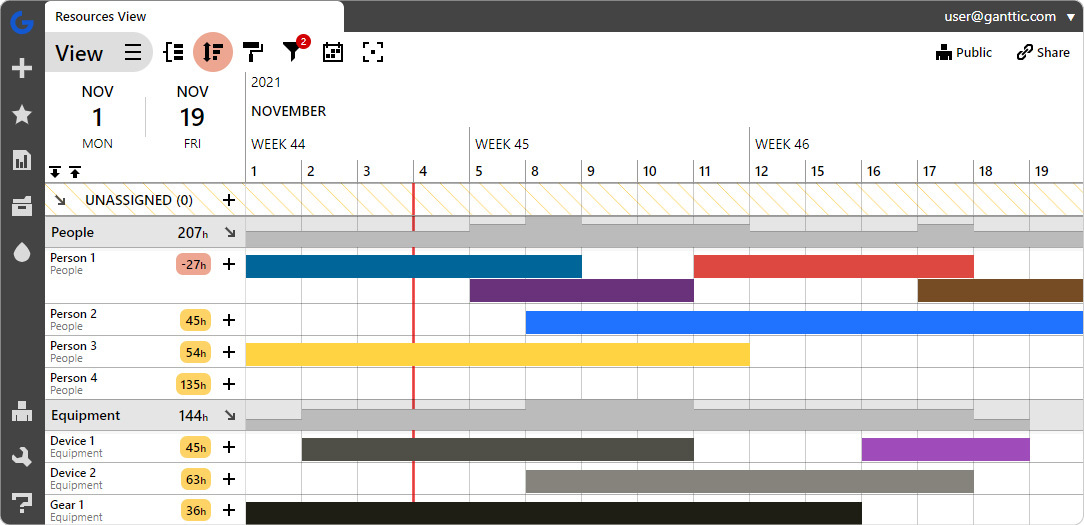Collaboration is a part of communication and a huge factor in projects’ success. And when your team is really collaborating, you’ll witness a never-ending discussion that adds extra value to each of your projects .Here are the steps you need to take to implement a collaboration tool for project teams.
These tools are a means to help you and your project teams work together on accomplishing a specific goal or goals. Based on your specific needs, there’s plenty of options out there.
- Whiteboards
- Kanban boards
- Spreadsheets
- Gantt charts
- Project portfolio management platforms
- Resource planners
It makes life easier, that’s why!
A change in the timeline will be a hiccup, not a catastrophe. Your team will work on a project as a unit maximizing each others’ potential. Each team member will feel that their contribution is cherished.
Collaboration in any team has to do with the infamous soft skills like emotional intelligence, strategic thinking, empowering the skills of others, conflict resolution, and mental flexibility. All of which are necessary and important but sometimes you need something a little less complex to grease the wheels of collaboration. You need to implement a collaboration tool to make the magic described earlier possible.
And when you’ve got a collaborative planner to back you up, you’ve made your own job a hell of a lot easier.
The easiest and the worst thing you could do is to choose a software that “everyone’s using”. You really have to do a Google deep dive to find project management software that suits your team’s needs. But before you get to the diving part, make sure you know what those needs are and if there is a need for a collaboration software altogether.
1. Ask Questions
A few of the aspects to think about are:
- How you plan projects
- Current collaboration methods (why it’s working for you and what’s lacking)
- Size of your team
- Frequency of the communication (for example, is there a need for instant messaging)
- Are there any virtual workers
- Do you need to store or share documentation;
- Are there clients or other stakeholders that need access to the tool.
The aspects mentioned above are a good place to start but there isn’t a one-size-fits-all checklist. Since a collaboration tool can be many things starting from a simple messaging app to a complex tool for project or resource planning that enables your team to come together to complete a project, you really have to think of your team.
If you aren’t sure if you are missing something, have a meeting with the other project managers or with your team. That way they are a part of the decision process from the beginning and you understand their needs and concerns better. Establish the core needs and the things that would be nice to have but not essential.

When you actually get to the part where you are choosing a software, make sure you have options. Most tools out there offer you a free trial period where you can test things out. Use that wisely.
Map out what you need to try out beforehand. Think about the general user-friendliness and how fast you were able to find what you need. That will give you an idea of how difficult it’s going to be for the rest of the team. If the trial period ends but you haven’t had enough time, ask for an extension.
Based on what you find, you might come to a conclusion that you need to implement several tools. Or you might find that you have to combine what you already have with something new. Both options are fine.
There probably isn’t a collaboration tool out there that’s perfect for your project team. However, there are many options that are going to work just great. Don’t get stuck on some small features that are missing. Keep the core needs in mind.
Tip: If combining software is in the roadmap, you need to ensure that the app you want to use has built-in integrations or the possibility to build your own via an API or Zapier.
Again, not earth-shattering stuff. But you know how it can go.
There might be a situation where implementation means sending out invitations and an email saying “this is what we are going to use now.” You know, the “you figure it out approach.” That’s not the way to go if you really want the tool to be used.
Research can’t stress enough how important training is. That’s why you need to be the master of the tool you have chosen before starting the implementing process. Ask for a demo and guides that can help you. Read those emails that you get during the trial period. Make sure you know enough to train others. You can also ask for a group demo where the support team of the software will go over all the important aspects.
4. Start Slow
While the thorough approach might be a bit too much for a part of your team, you need to understand that everyone is different and you can’t only focus on the ones that adapt quickly. There are a lot of individual differences when it comes to technological skills.
Even if your project team consists of young hip people that are always in front of a screen, there’s still a need for training. You need to go through different dimensions of the software and you need to set some rules. Providing your team with training will increase their knowledge of the tool and ultimately increase their intent to use it. And that’s something you want, isn’t it?
If you are certain that you need to implement the collaboration tool, your team must be certain that learning the skill will help them perform better on the job in the future. That’s one of the reasons you need to take a hefty amount of time for the first step. You are going to convince your whole team not just yourself. If you have established your team’s needs, it’s a whole lot easier to convince them that the software isn’t just something that you’d like them to use. They easier for them to understand that it’s beneficial to them.
5. Provide an Opportunity to Reflect

Finally, something that isn’t yesterday’s news. When implementing any kind of new software, the opportunity to reflect is often missed. It can be a casual conversation, it can be a whole group session, it can be an agenda point in a meeting and it can all of those things.
The easy thing to say it’s good enough since you have already done some training. Since it’s the old way of thinking it’s unfortunately also the most common way of thinking. Is it also the right way of thinking? It isn’t, at least not according to research.
The right way of thinking here is actually kind of similar to design thinking. Implementing a software is a never-ending circle of steps you need to continuously take. You have to have enough empathy to see where to problems really are. Giving your team the opportunity to reflect will give you an enormous amount of input on the process as a whole, your part in it and the tool itself. Just be ready to make changes accordingly.
6. Learn From the Past
The goals here are for one to get feedback and to assess how your team is doing. Maybe you have gone wrong somewhere, maybe something needs further training or explaining. Perhaps there’s something you aren’t utilizing at its full potential. Or maybe everything is going great and you have really found the perfect collaboration tool to implement for your project team. Maybe everything is just the worst and you need to extinguish some fires.
It’s all a maybe. And it will be a maybe until you address it. Even after you have been using the software for a while and everything seems to be working just fine. Go back to it. Make sure everything really is working just fine. And if it isn’t, find a way to fix the problems. Use the continuous feedback to support your decisions.
Ganttic for Project Collaboration

Ganttic is project resource management software. Use it to schedule, plan, and manage your project resources, tasks, as well as the entire portfolio. With Ganttic, you’ll have a high level overview of what’s going on. And create plans that can be shared with the entire team.
Try out Ganttic for a free 14 day trial . And in that time, you can sign up for unlimited free demos for you and your project team. We’ll walk you through the whole process – from set up to optimizing everyday use. Discover a new approach to project collaboration.